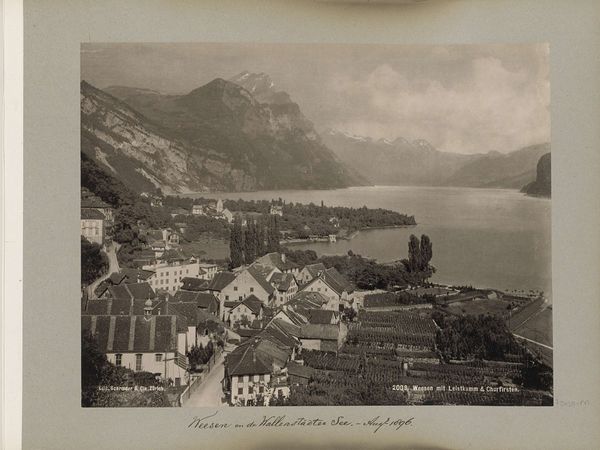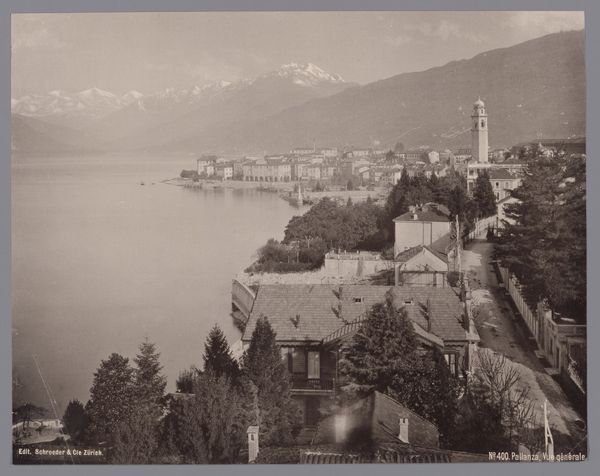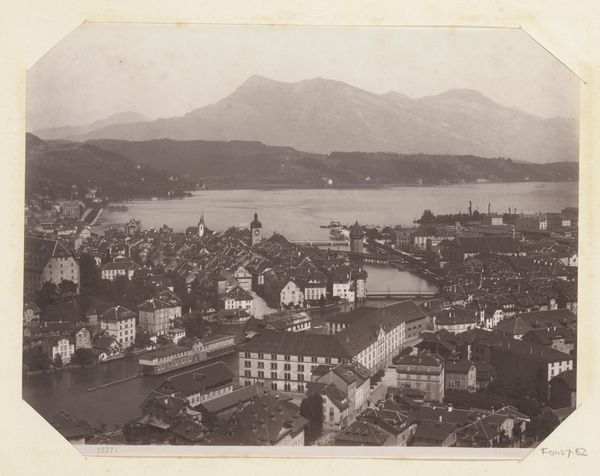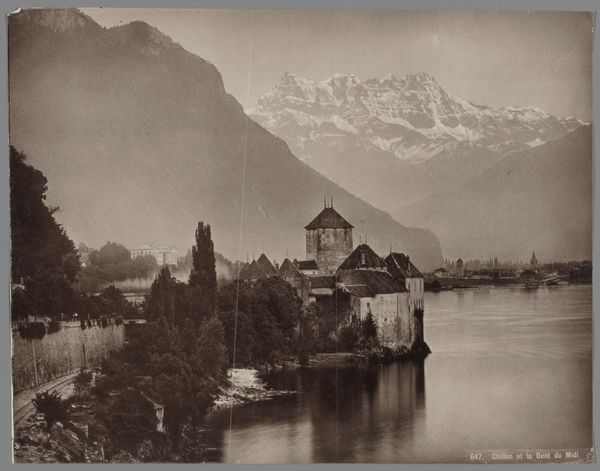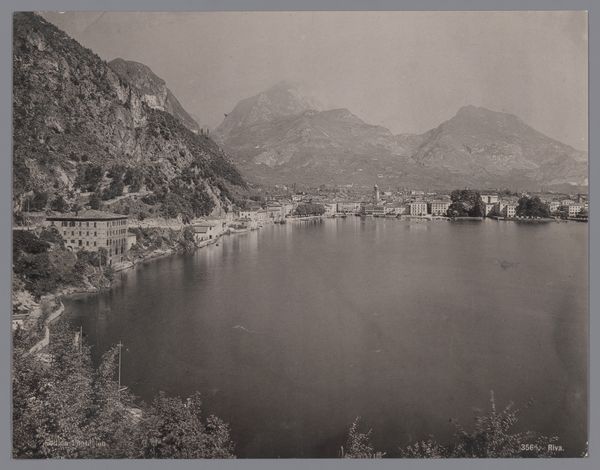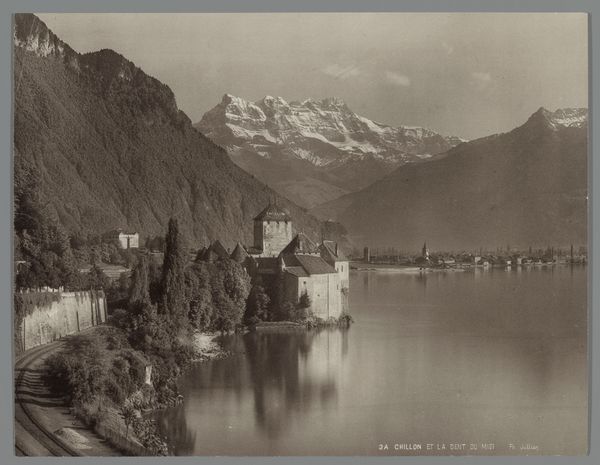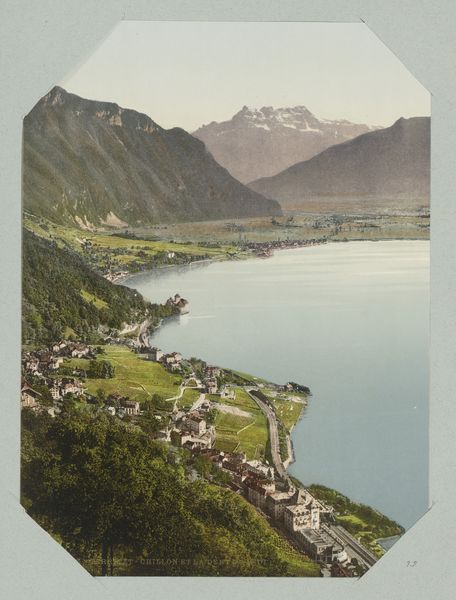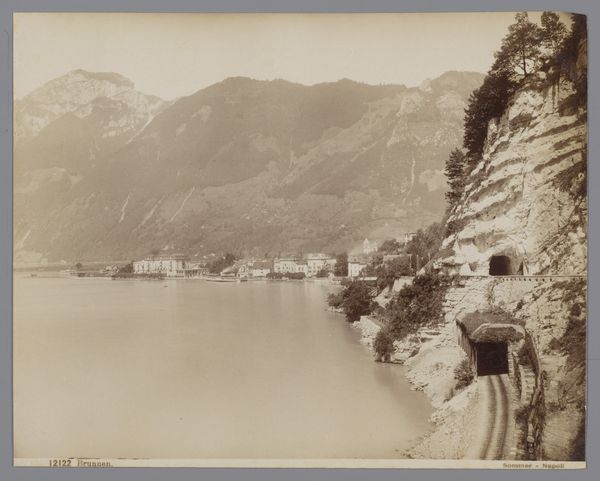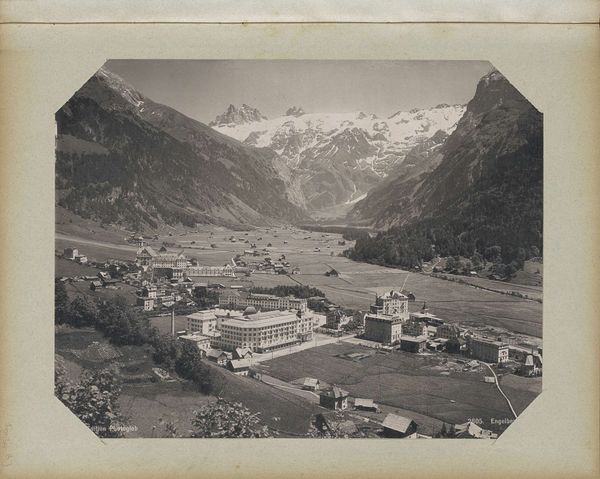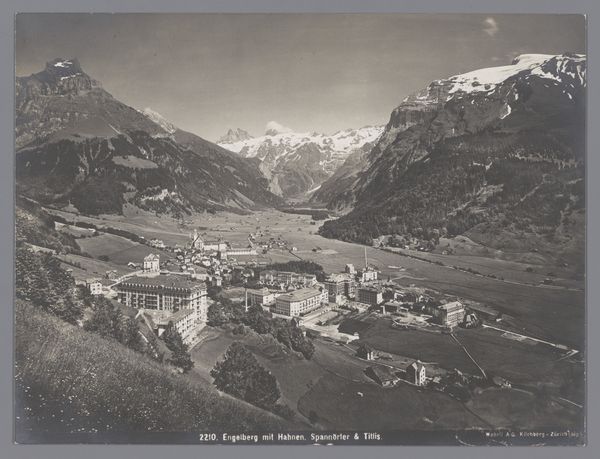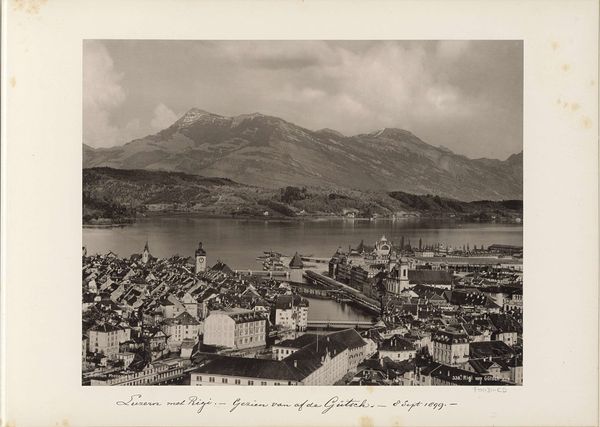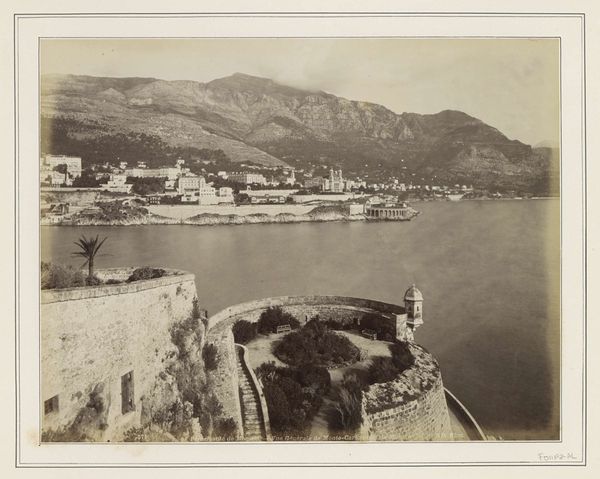
Gezicht op Montreux aan het Meer van Genève, in de verte de Dents du Midi 1870s - 1880s
0:00
0:00
Dimensions: height 228 mm, width 295 mm
Copyright: Rijks Museum: Open Domain
Editor: Here we have Arthur Gabler’s gelatin-silver print, "Gezicht op Montreux aan het Meer van Genève, in de verte de Dents du Midi," created sometime in the 1870s or 80s. The detail is incredible; I’m struck by how the rooftops seem to tumble down toward the water. What draws your eye? Curator: My gaze immediately jumps to the mountains in the distance, the Dents du Midi. Their snow-capped peaks act as a kind of silent, enduring witness. Think about mountains as symbols: eternity, aspiration, even spiritual enlightenment. How do they function within this cityscape? Editor: So, more than just background? Maybe they represent the permanence against the ever-changing nature of the town below? Curator: Precisely! And consider the lake, the water element. It signifies both change and continuity, reflecting the sky, the mountains, and the town itself. Does it evoke a sense of tranquility, or something else? Editor: Tranquility, definitely, but with an undercurrent of something… monumental. The sheer scale of the mountains reflected in that vast lake—it’s awe-inspiring. Curator: Awe is key. These Romantic era landscapes often instilled that feeling of the sublime, reminding viewers of nature’s overwhelming power and humankind’s relative insignificance. Editor: That makes sense. I hadn't considered how deliberate that feeling might be. I thought it was just a nice view! Curator: Think deeper about it - did this era influence our perception and depiction of landscapes even today? Editor: It definitely gave me a fresh appreciation for how landscapes carry meaning. There is such intent! Curator: Exactly. Images are never neutral; they are charged with history, emotion, and the weight of cultural memory.
Comments
No comments
Be the first to comment and join the conversation on the ultimate creative platform.
